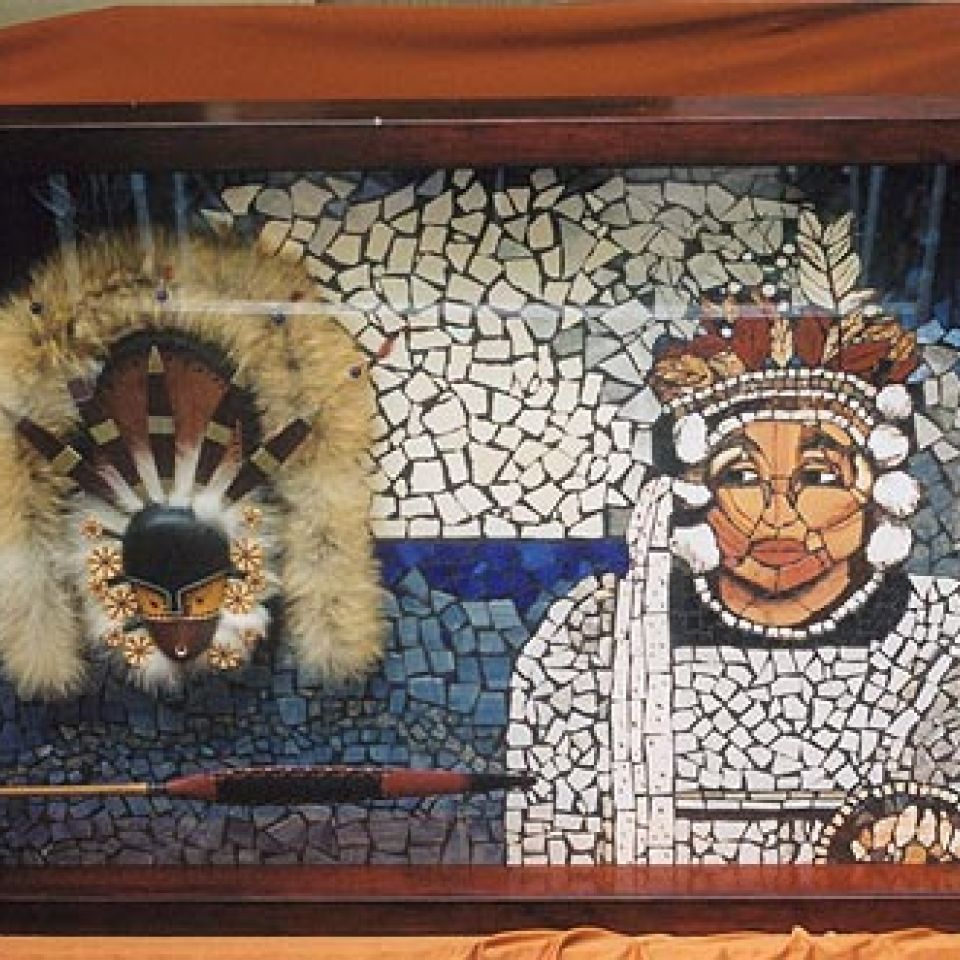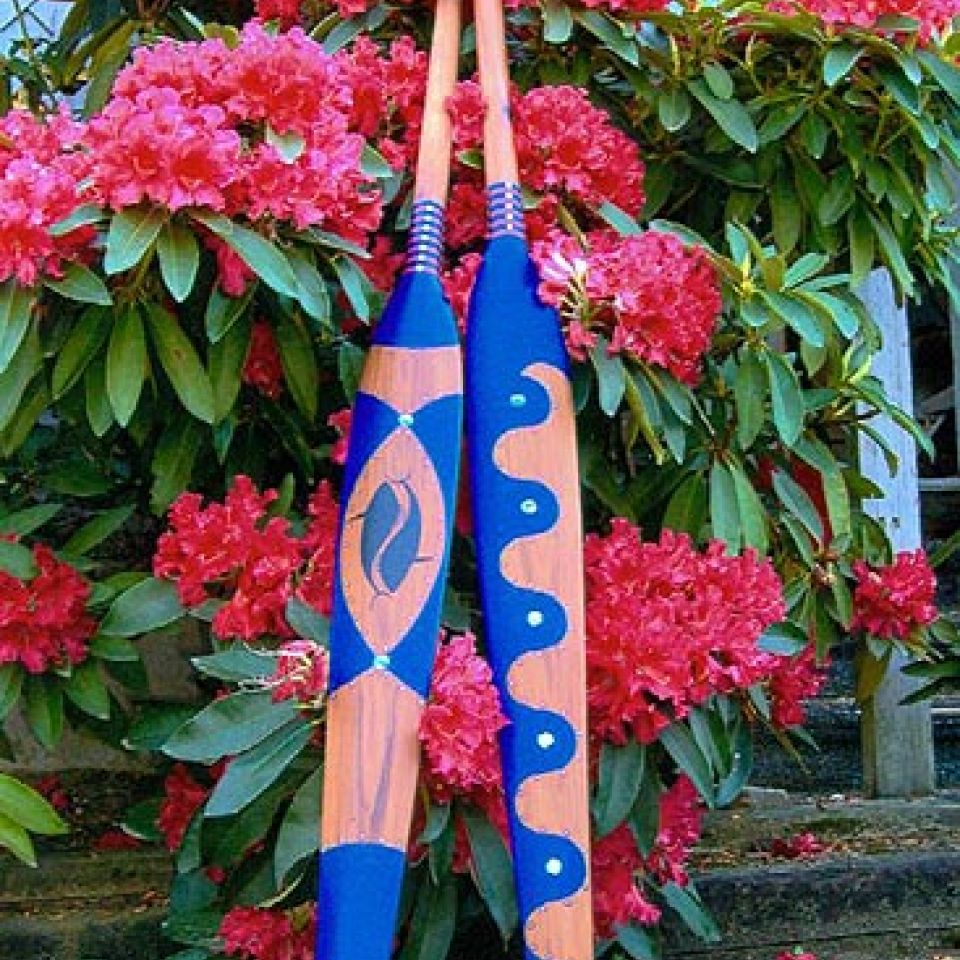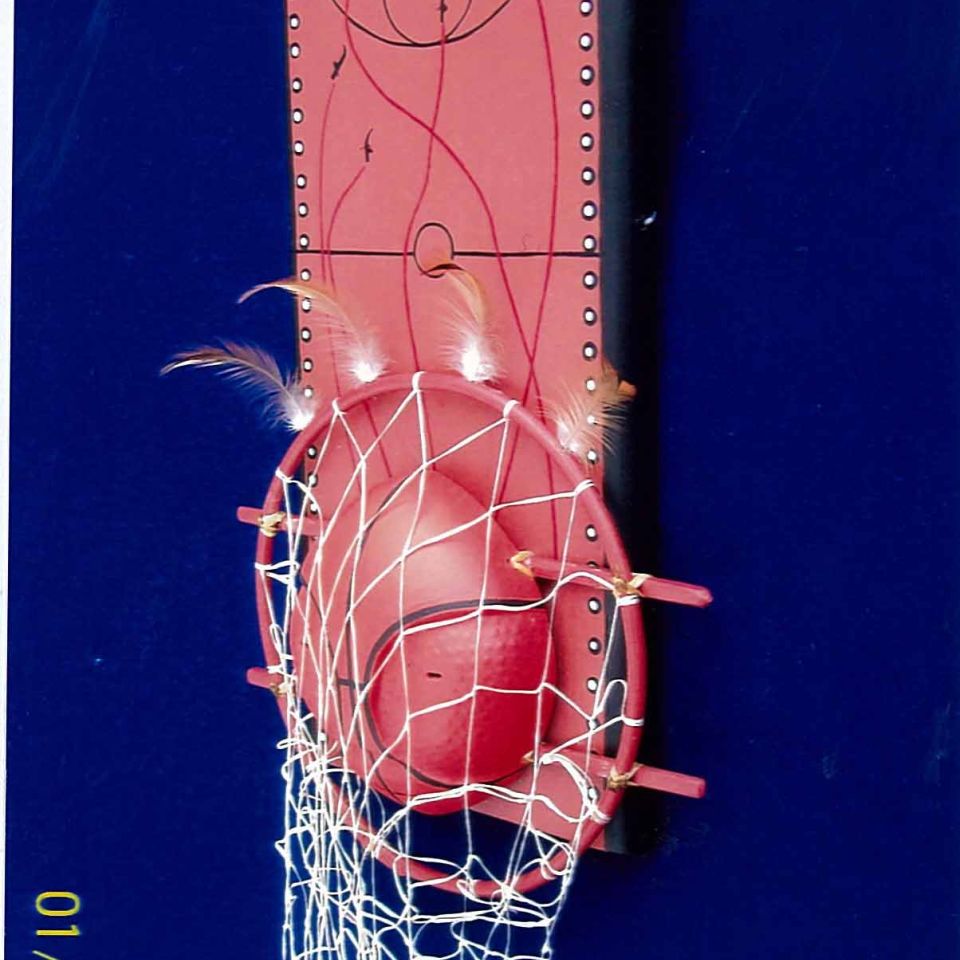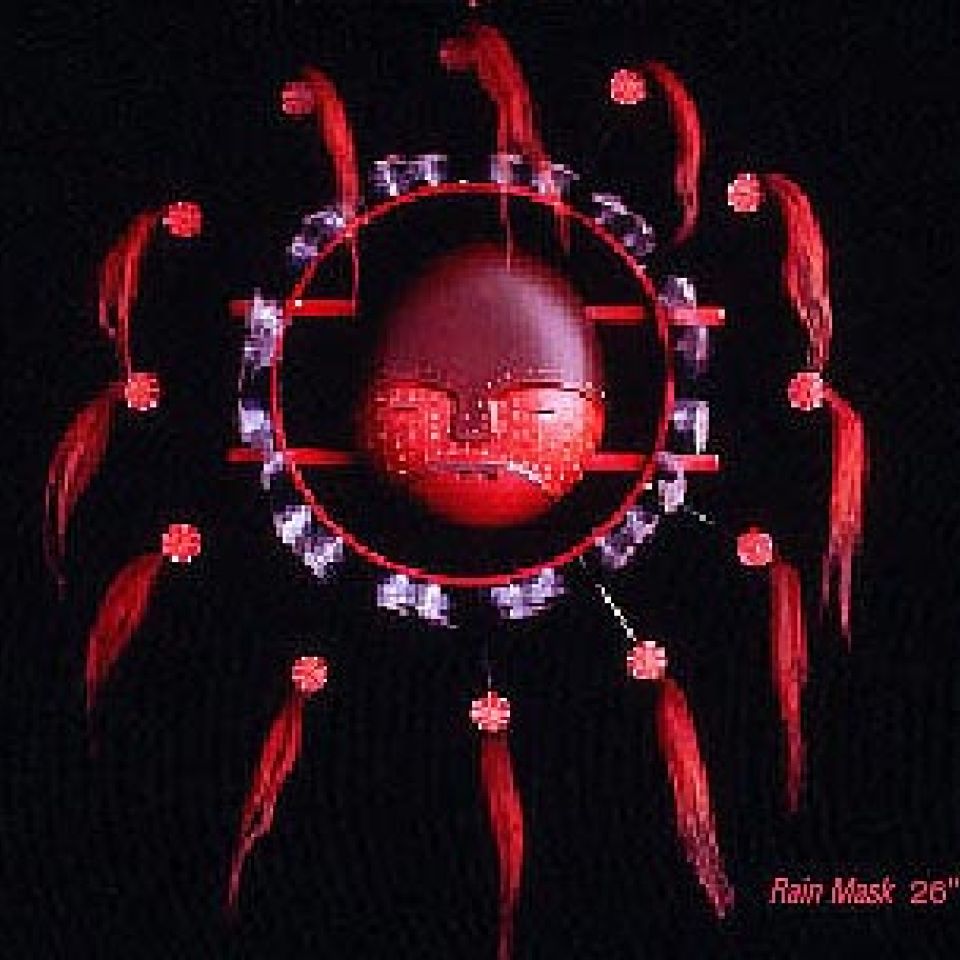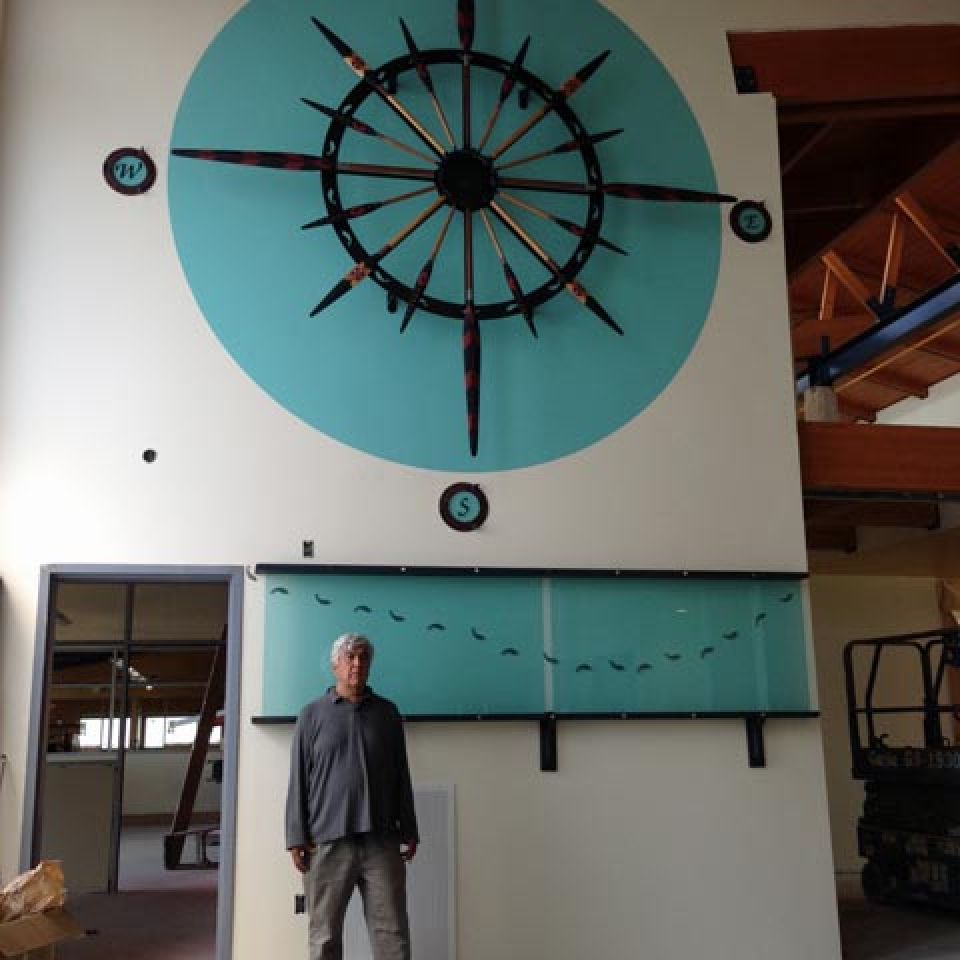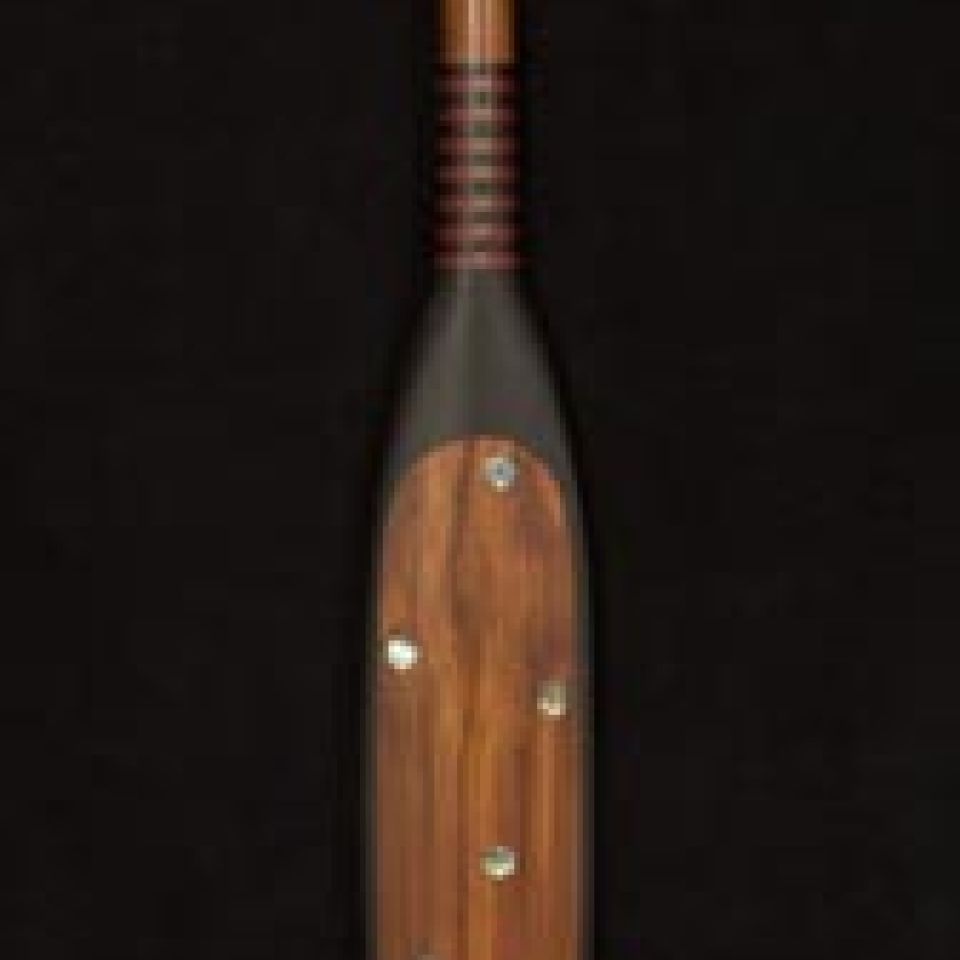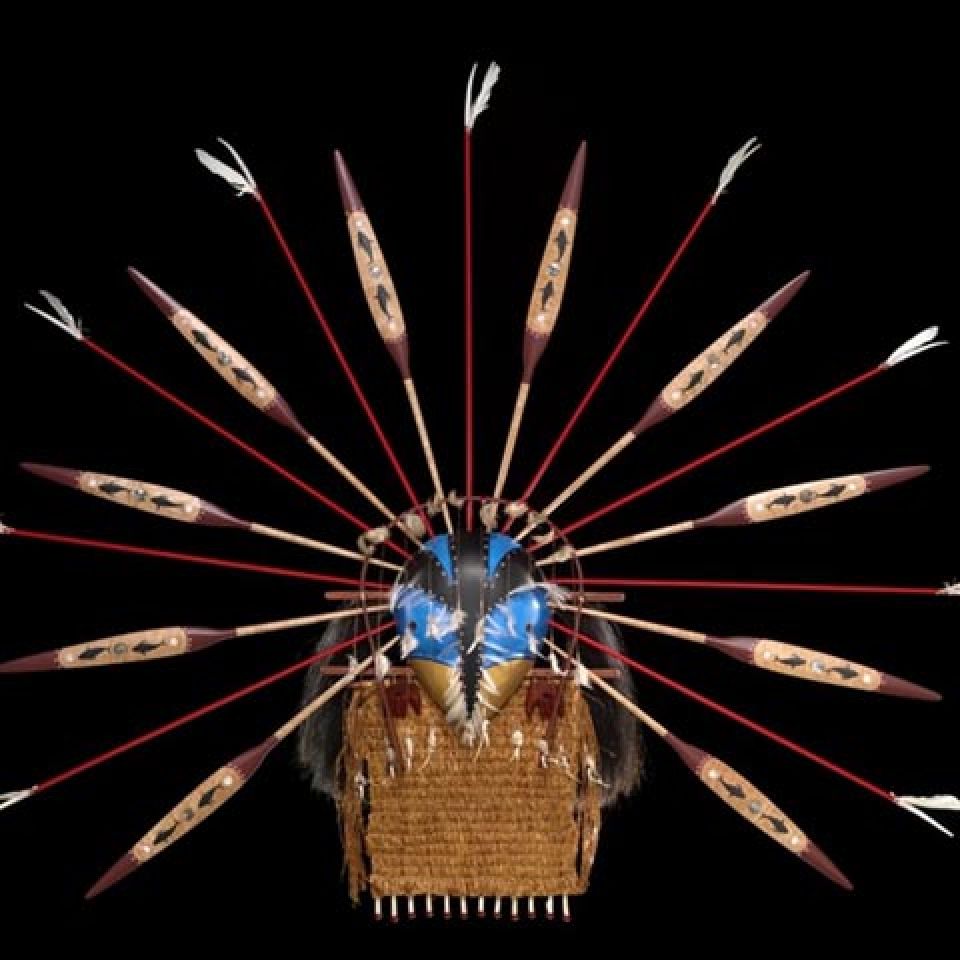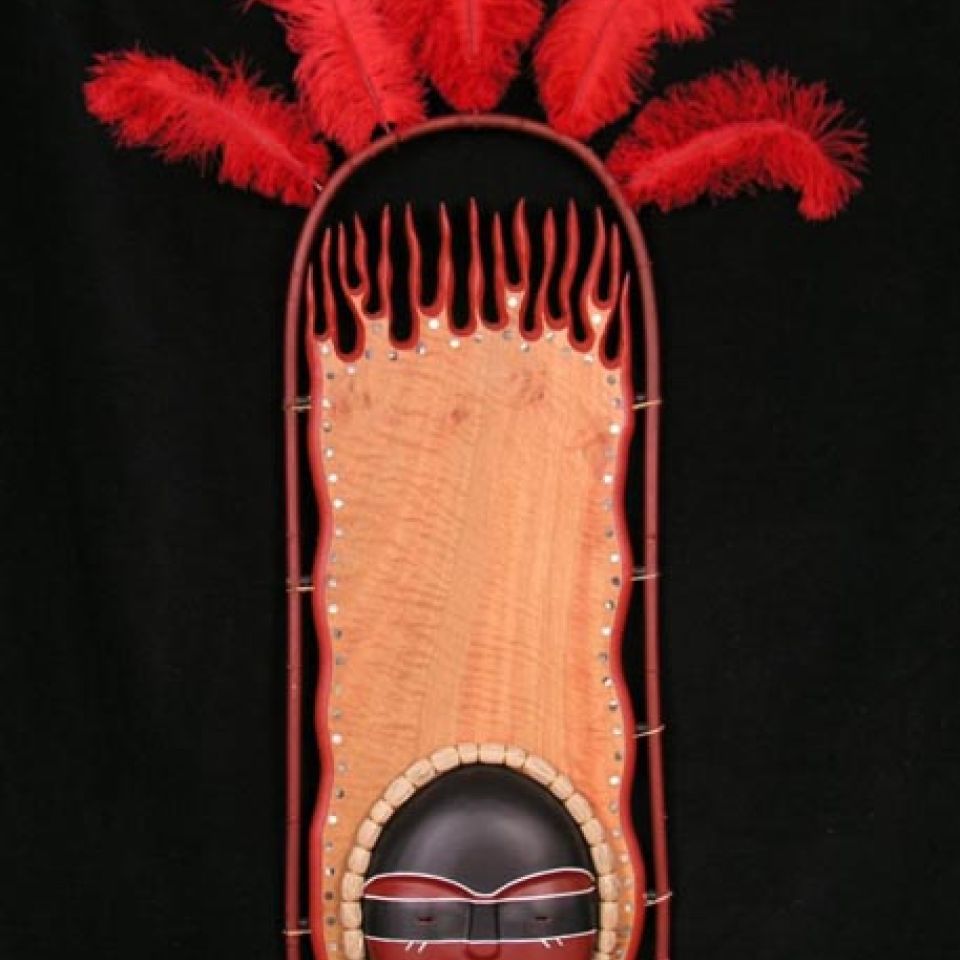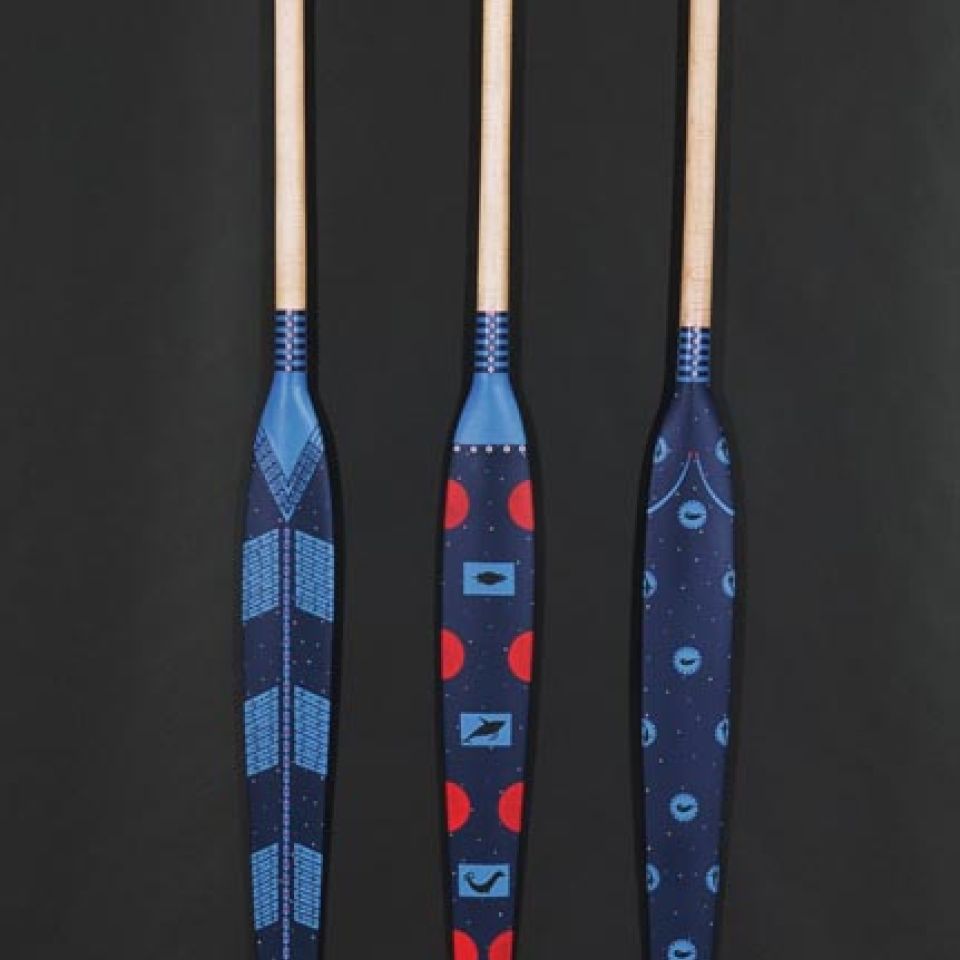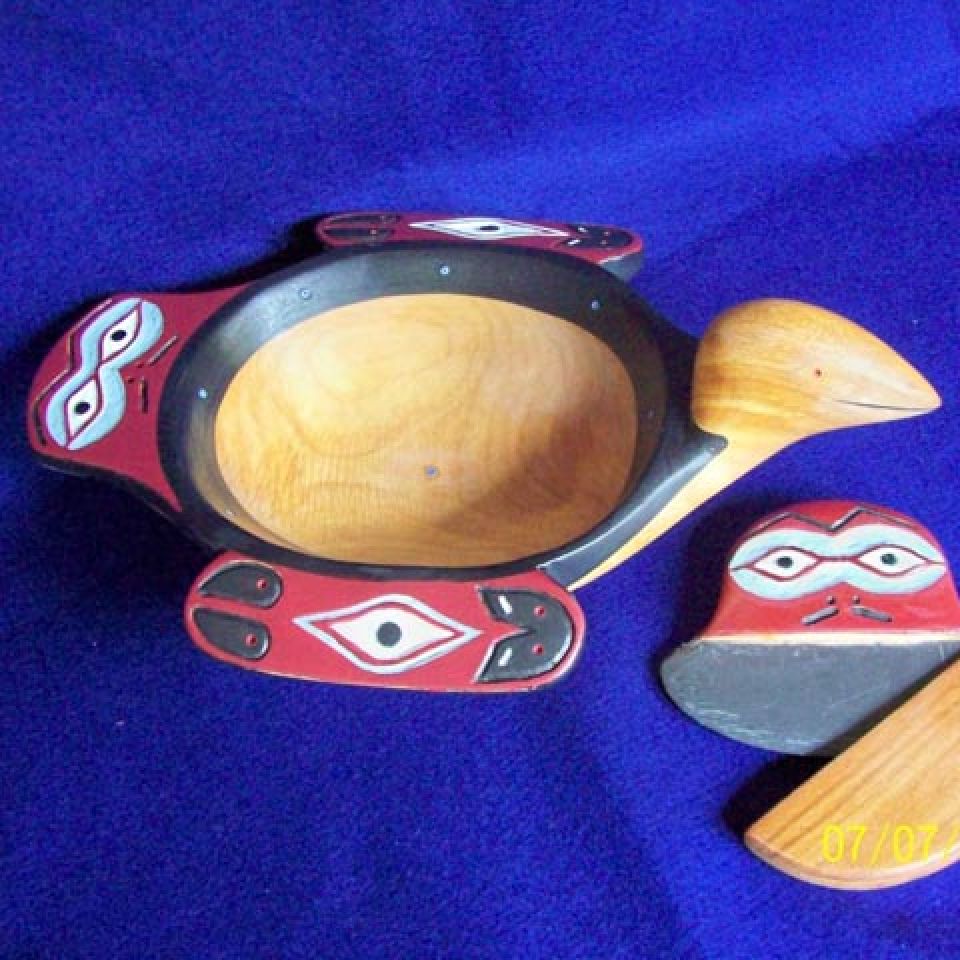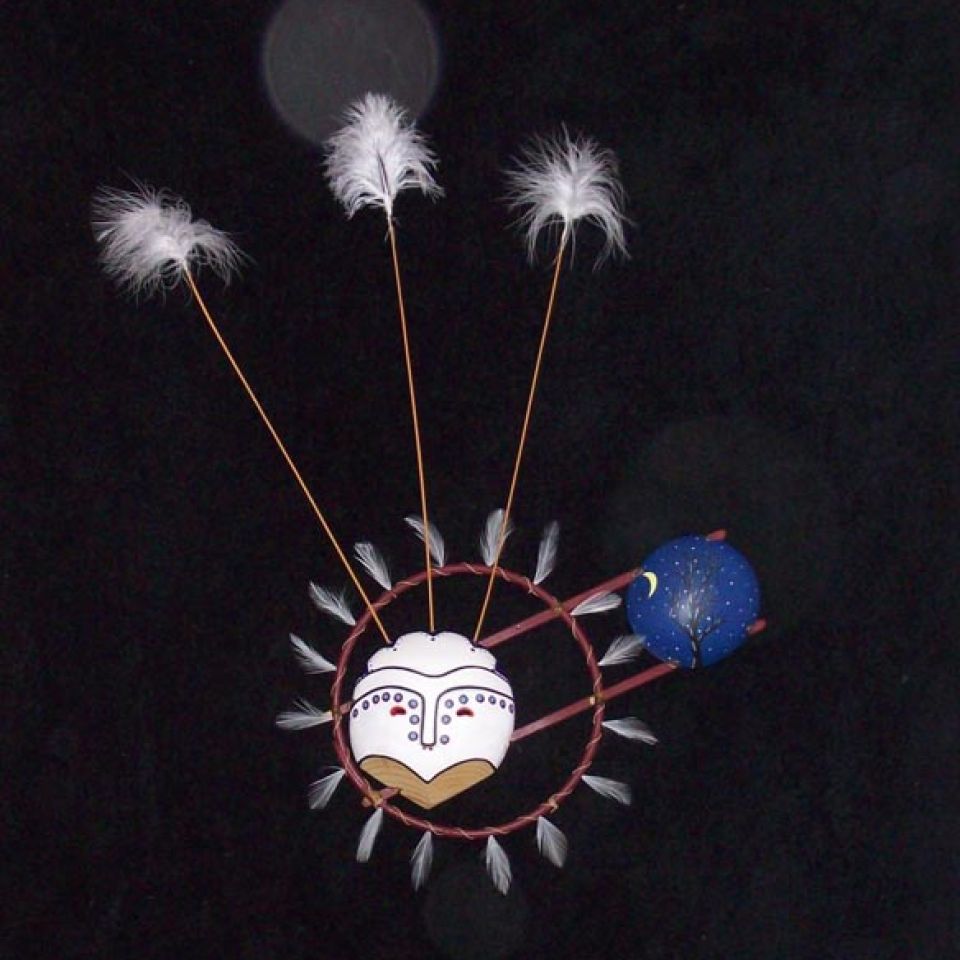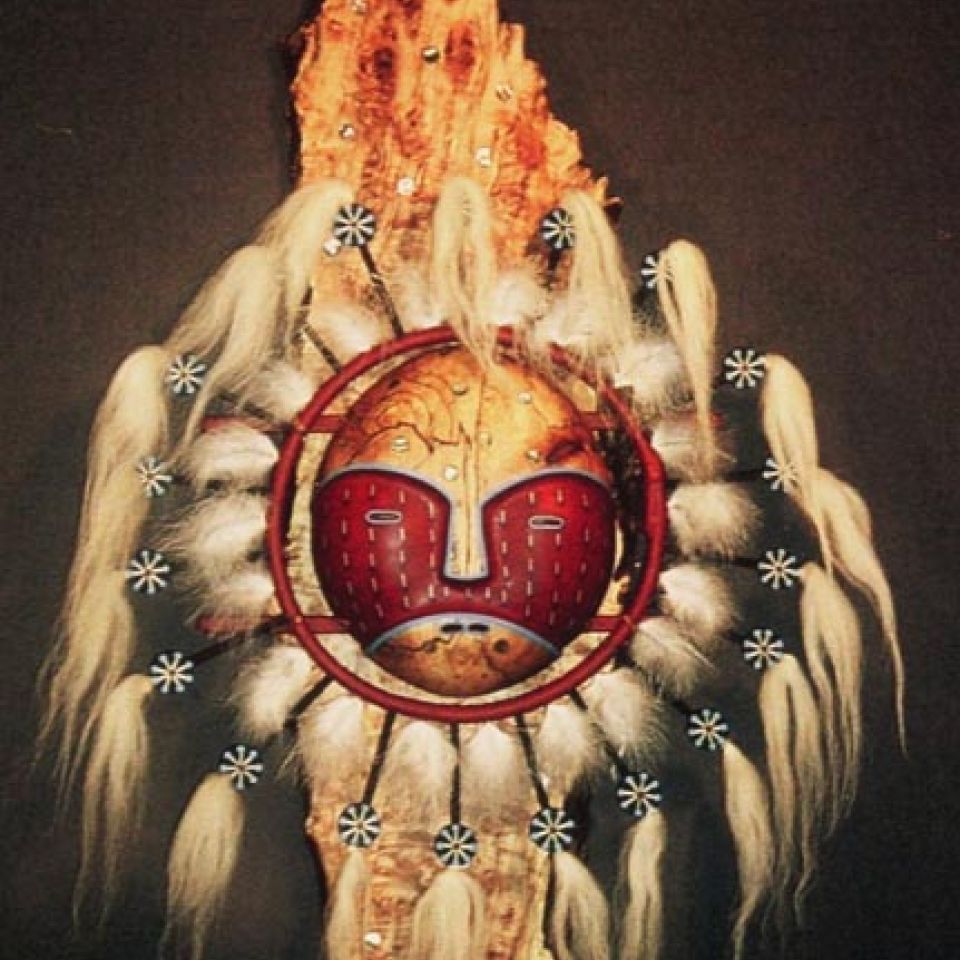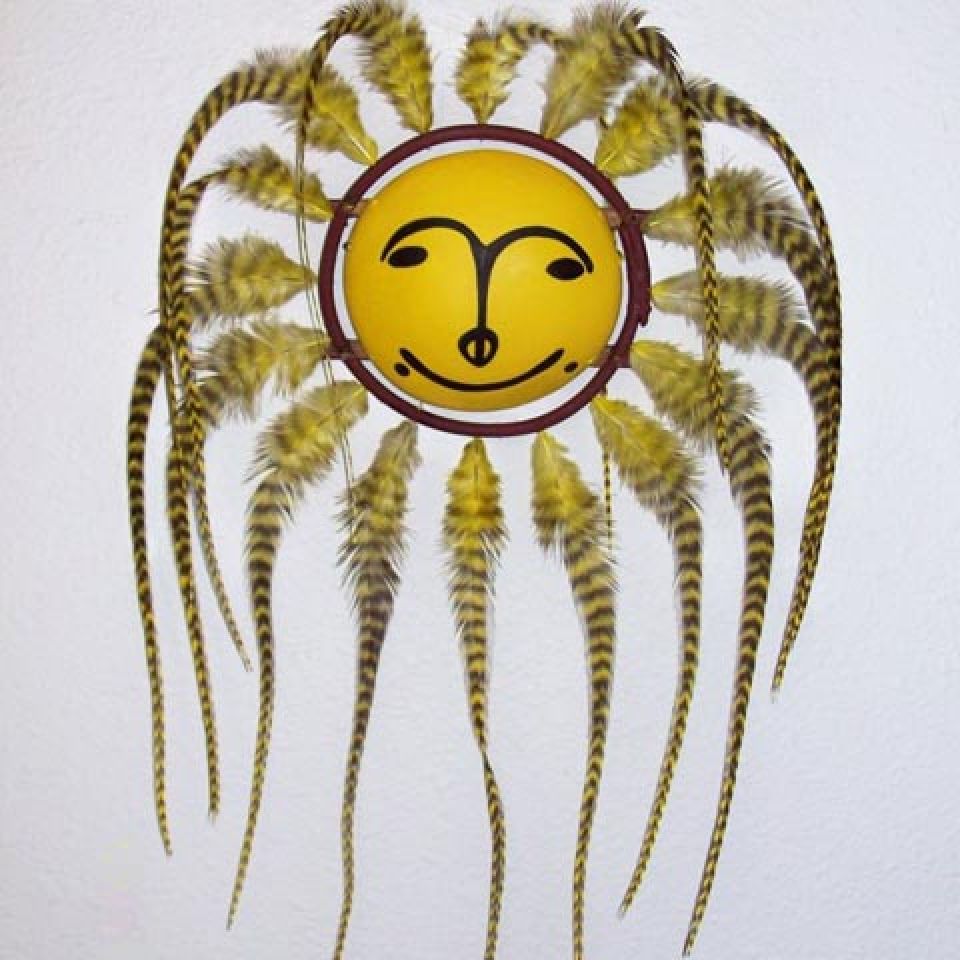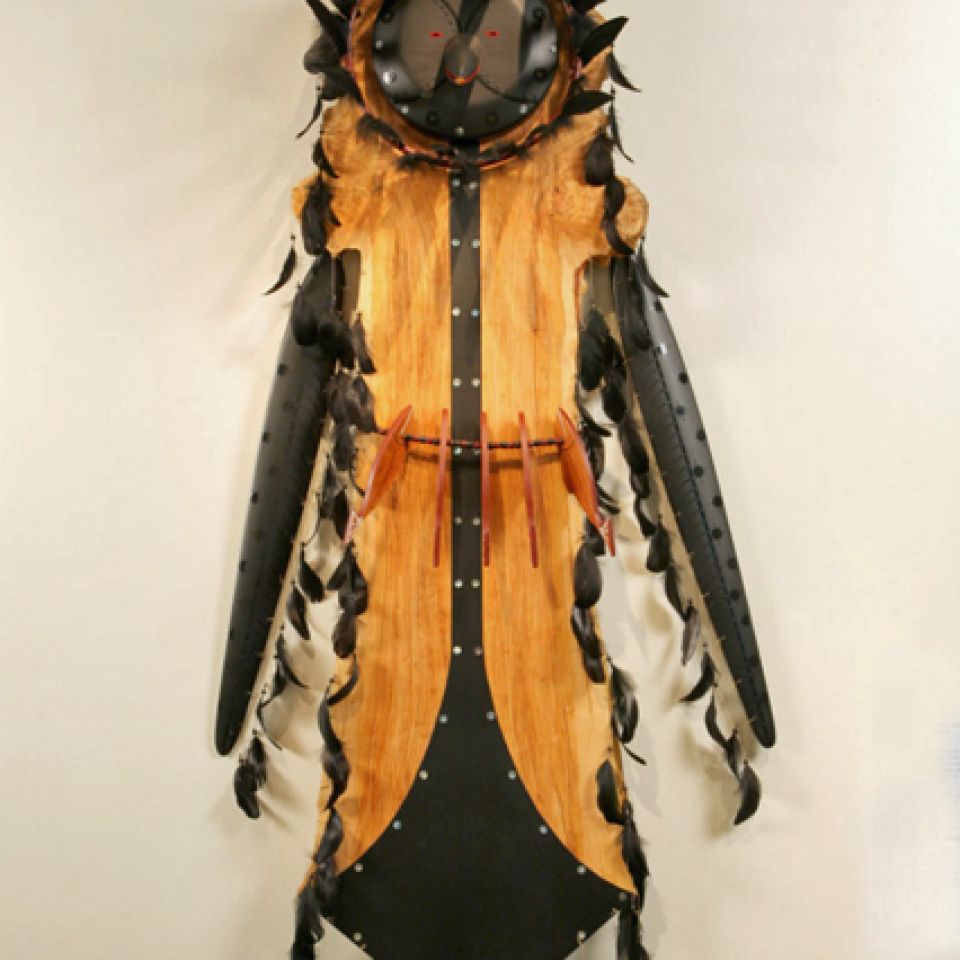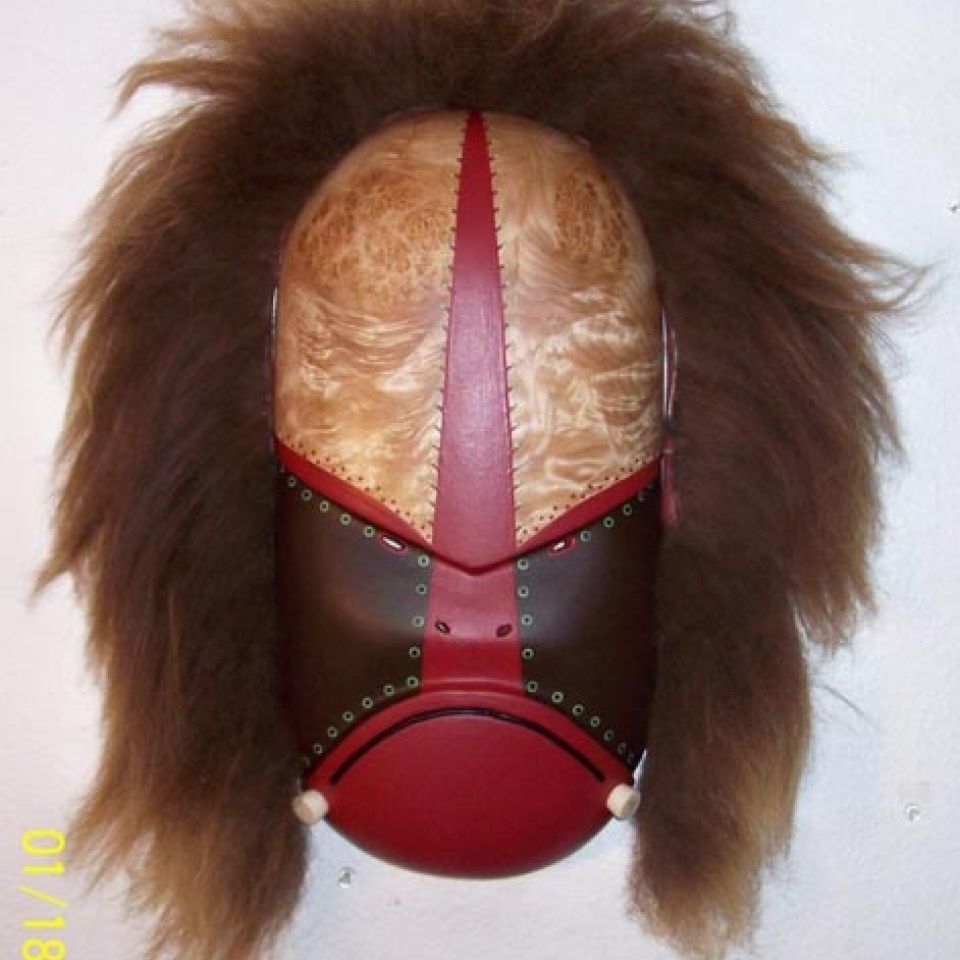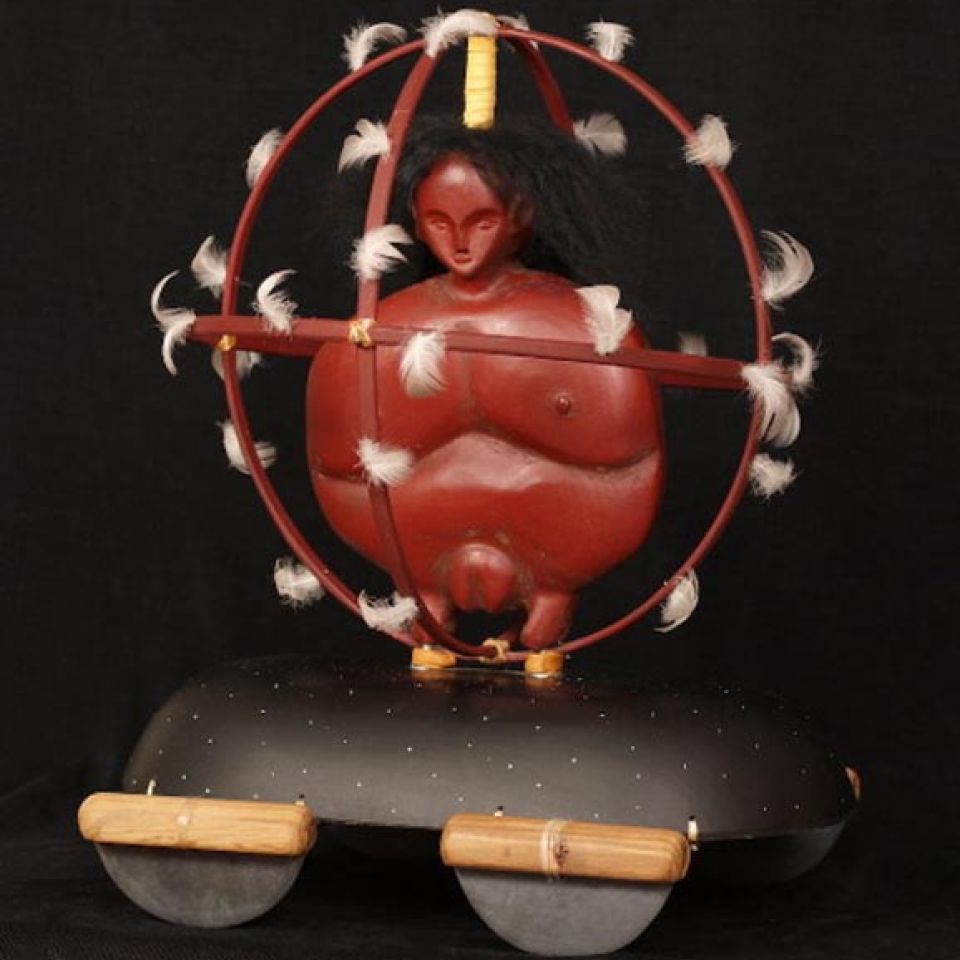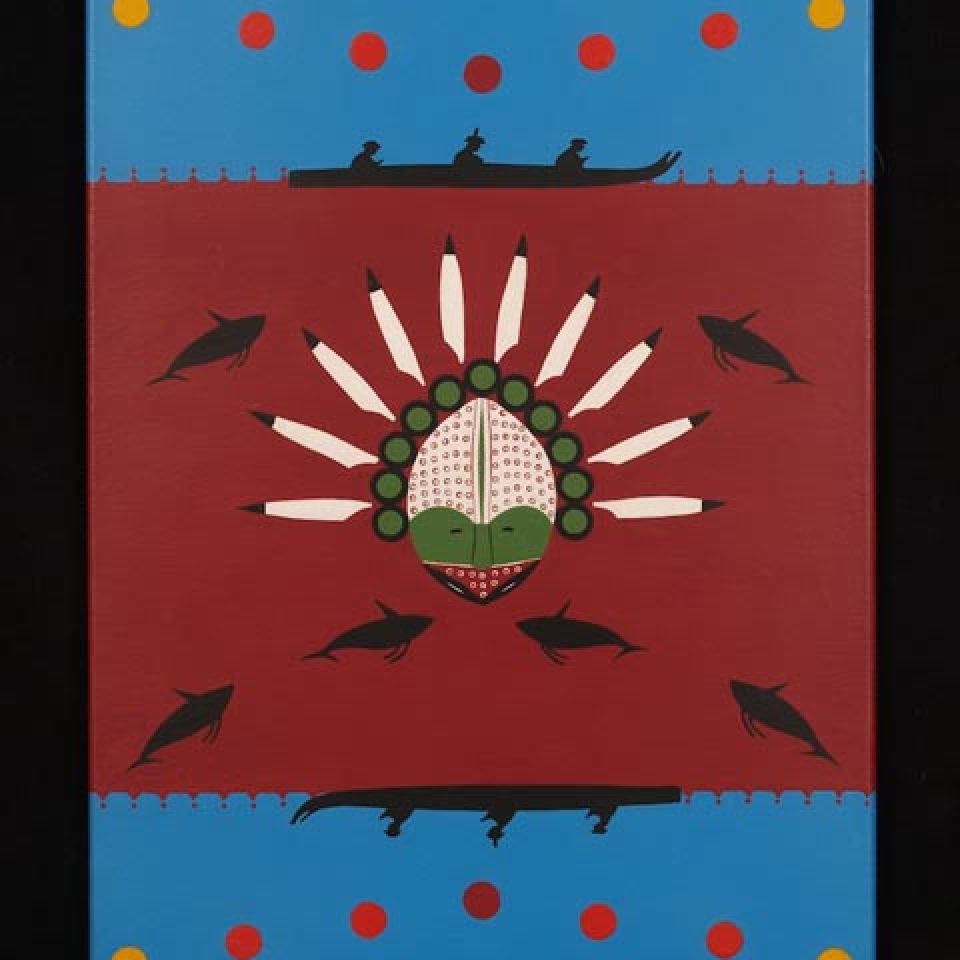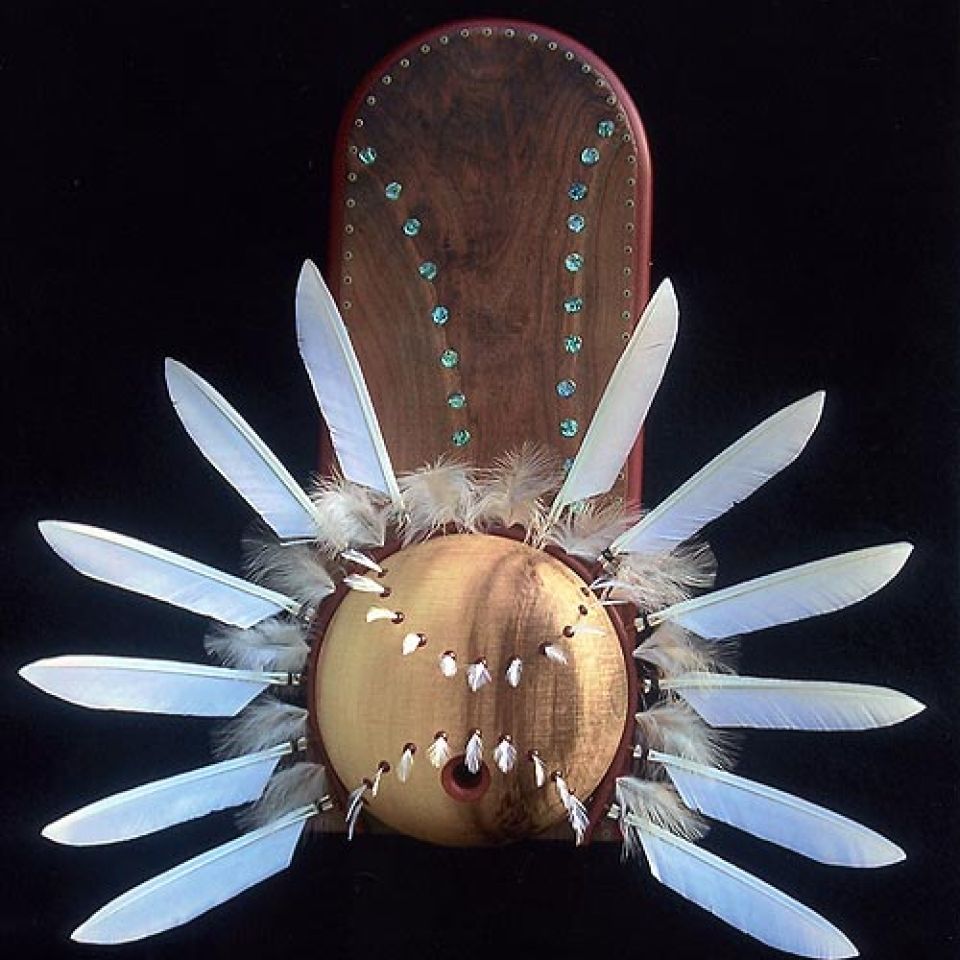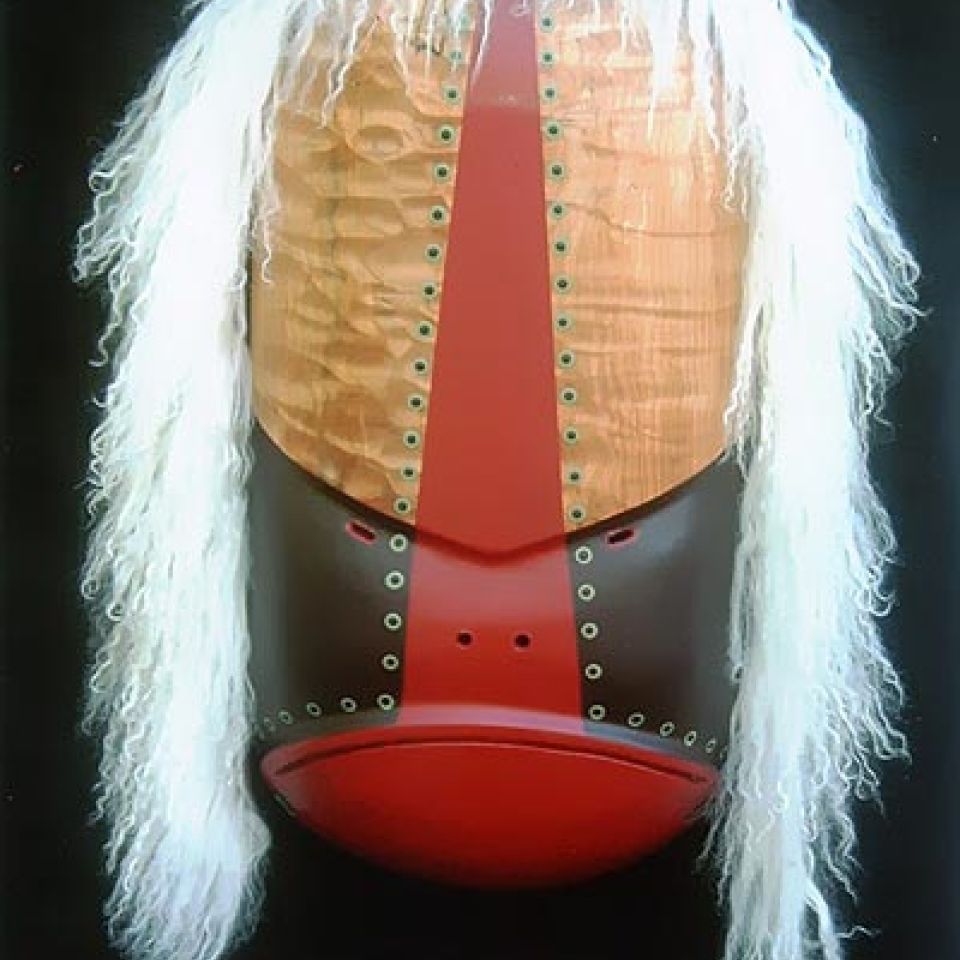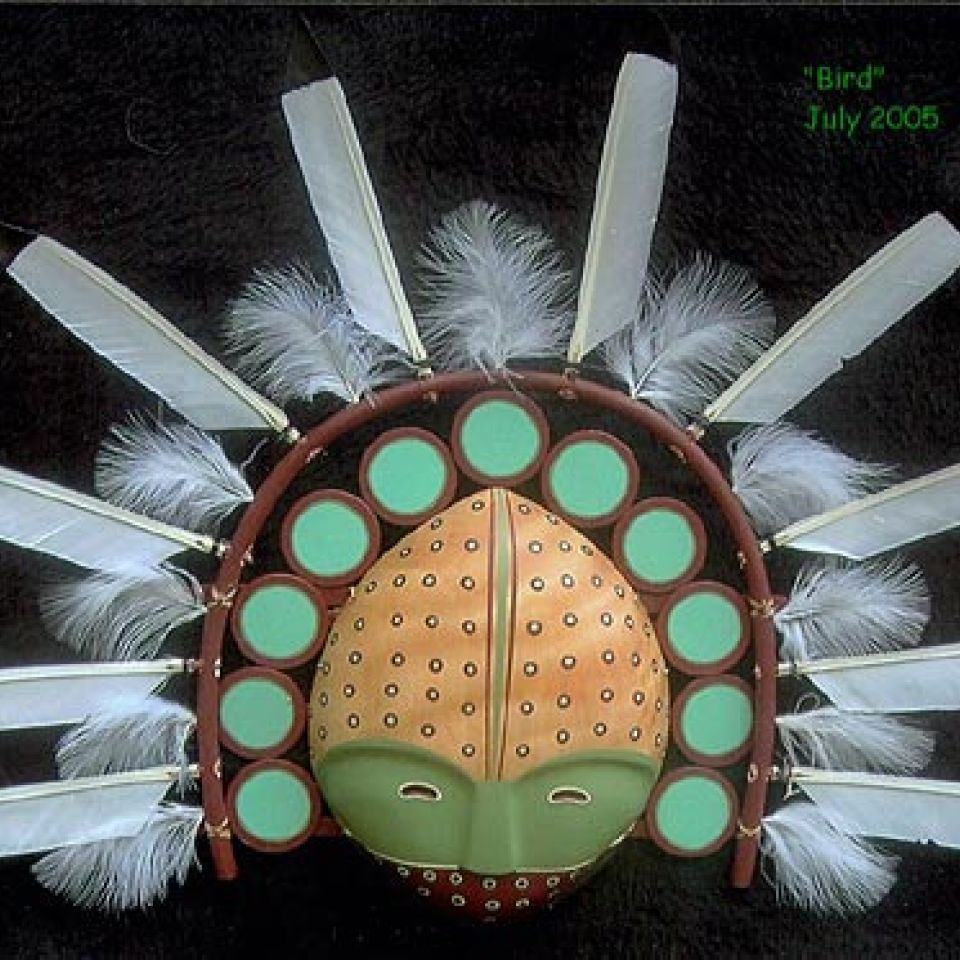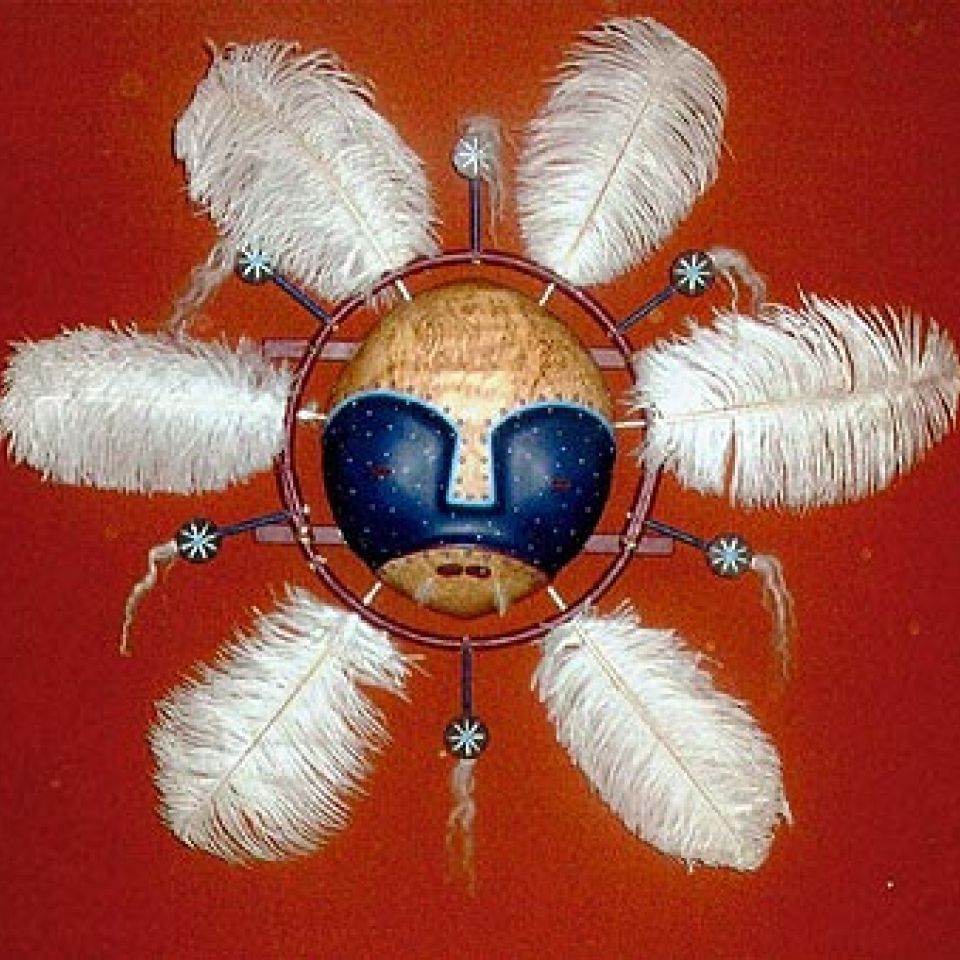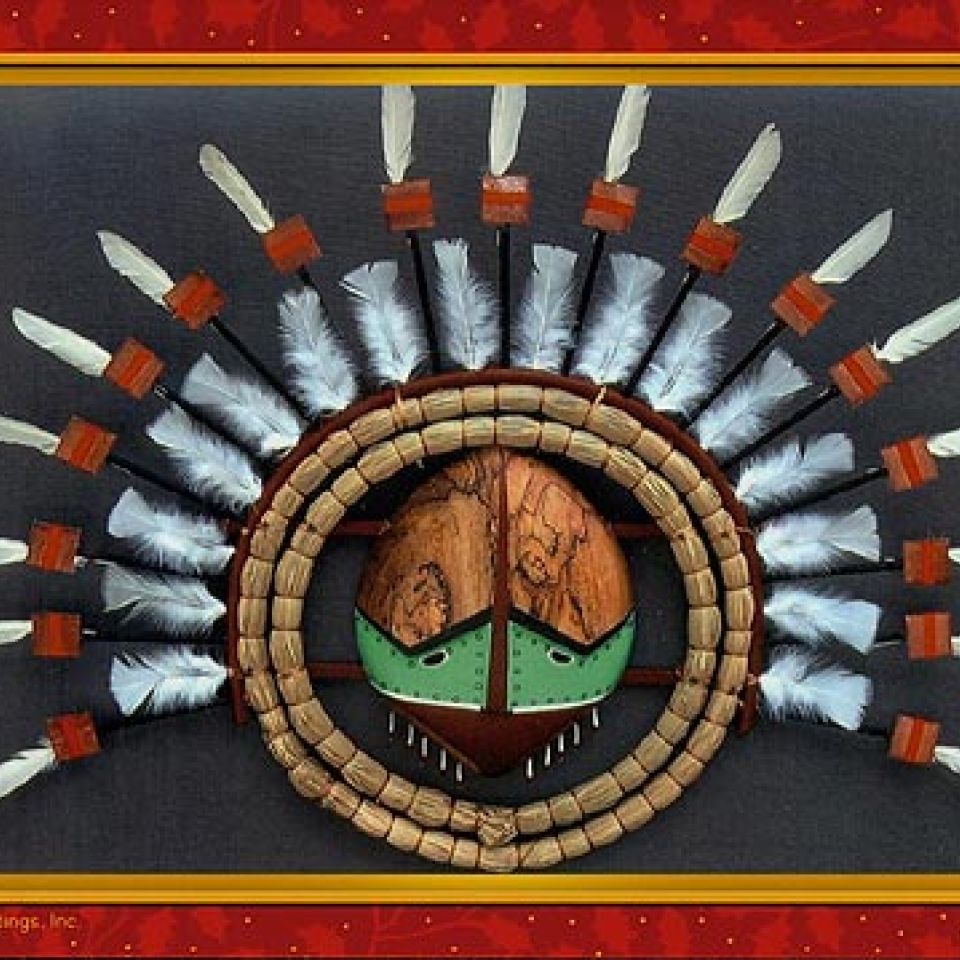Jerry Laktonen
Medium: Beading, Carving
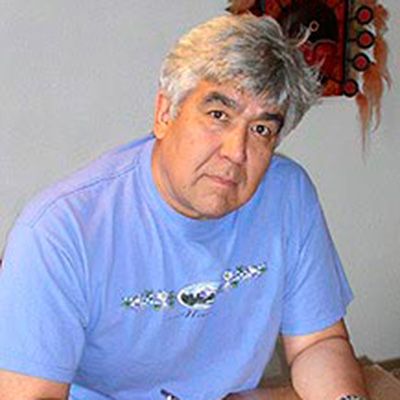
Jerry Laktonen, Alutiiq, was born in 1951 on Kodiak Island, Alaska. Best known for his masks and paddles, he is strongly influenced by the traditional carving of his Alutiiq ancestors. Due to massive destruction of the Alutiiq people and their culture that began in the 1800s by the Russians, Jerry grew up with little awareness of the carving tradition that is now his passion and his career. After his fishing career failed to provide adequate income to support his family, Jerry turned to carving in the early 1990s.
While he had no formal art training, his experience in repairing fishing boats gave him a foundation for further developing his talents with wood. While his Alutiiq ancestors used driftwood to fashion their carvings, Jerry prefers to use a variety of woods, including one of his favorites, old-growth cedar. He adheres to the Alutiiq tradition of painting his pieces in vivid colors, in designs that are often rich with precision detail. Jerry insists on the cultural authenticity of his work, drawing on countless hours of study of museum pieces and photographs in books.
Despite this quest for technical accuracy, Jerry is sure that a trancelike “knowing” of ancestral presence ultimately inspires his carving. One of only a few Alutiiq carvers of his generation, Jerry is perhaps the best known. His work is featured in the traveling exhibit “Looking Both Ways” on Alutiiq culture. The basswood carving featured in the exhibit, a mask entitled “Joe Hazelwood”, is a reference to the Captain of the Exxon Valdez. The form is unmistakably Alutiiq, with an elongated face, feather headdress, and striking geometric painting. Jerry refers to it as a “controversial” piece because of it’s mockery of the man responsible for the massive 1989 oil spill that devastated the Prince William Sound, which changed Jerry’s life forever.
With the fishing business destroyed and resultant financial and emotional stresses, Jerry sought a new career and a new life. He wanted to connect more with his Alutiiq heritage and provide hope for his personal future and that of his people. Using the tenacity and focus he learned as a fisherman, he set about to become an artist. Jerry embarked on a crash-course to study traditional Alutiiq carving. Although he began carving seriously at the age of 45, his skill and dedication drew the attention of the Smithsonian Museum, which purchased his first mask for their gift stores. Eventually, they bought more than thirty others.
Jerry has since received much recognition, including several awards from the prestigious annual Santa Fe Indian Market. His masks and paddles are featured in several different permanent museum collections, as well as numerous private collections throughout the United States. They include the National Museum of the American Indian, Alaska State Museum, Alutiiq Museum, Anchorage Museum, Autry National Center of the American West, Haffenreffer Museum, the University of Washington’s Burke Museum, as well as the Château-Museé, in France.
In March 2012, Jerry’s artwork titled “Sugpiaq Imaq” was selected by the Pendleton Woollen Mills of Portland, Oregon for incorporation into a premium Native American Pendleton Blanket.
Artist Gallery
Contact Information
Enjoy More Art
The Alutiiq Museum Store works with many of the artists in this gallery. Visit the store to see more examples of their work.
Artist Gallery
- Trish Abston-Cox
- Andrew Abyo
- Lena Amason
- Janelle Barton
- Melissa Berns
- Coral Chernoff
- Kayla Christiansen
- Rolf Christiansen
- Sarah Christiansen
- Ashley DeHart
- Sandee Drabek
- Elizabeth Egan
- Vickie Era
- Ramona Erickson
- Nannette Foster
- Sven Haakanson, Jr.
- Jessie Herman-Haywood
- JoAnn Holmes
- Doug Inga
- Helm Johnson & Alisha Drabek
- Rhonda Shelford Jansen
- Ashley Jensen
- Gary Knagin
- Cheryl Lacy
- Jerry Laktonen
- LaRita Laktonen-Ward
- Lulu Larsen
- Darlene Lind
- Patrick Lind
- Peter Lind, Jr
- Peter Lind, Sr
- Lydia Irene Lohse
- Mary Jane Longrich
- Alyssa ‘Uswi’ Madrid
- Jacqueline Madsen
- Susan Malutin
- Jim Miller
- Angel Moreno
- Beverly Moreno
- Yvonne Mullan
- Ronna Myles-Era
- Alfred Naumoff
- Bruce Nelson
- Karla Nolen
- Tracy Opheim
- JJ Orloff
- Sky Pahmeier-Olson
- June Pardue
- Cindy Pennington
- Annie May Peterson-Lewis
- Keelin Rice
- Beverly Roddy
- Cassey Rowland
- Gwen Sargent
- Natalia Schneider
- Gloria Selby
- Hanna Agasuuq Sholl
- Amelia Simeonoff
- Speridon Simeonoff Jr.
- Arlene Skinner
- Mariah Stapleton
- Stacy Studebaker
- Kristy Suydam-Green
- Jessica Towns-Camara
- Alexandria Troxell
- Diana Velez
- Lalla Williams

